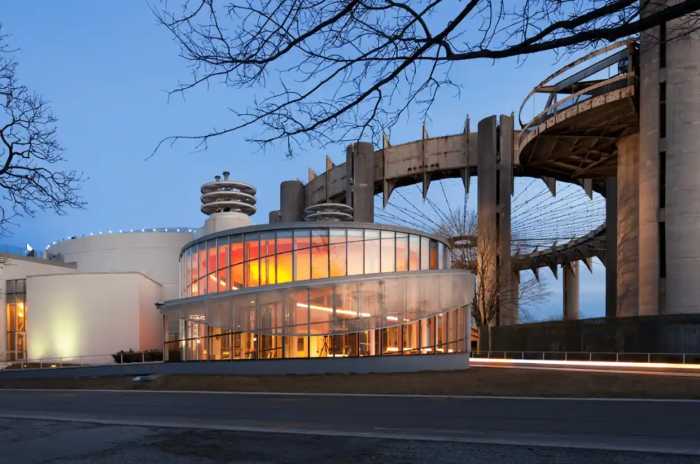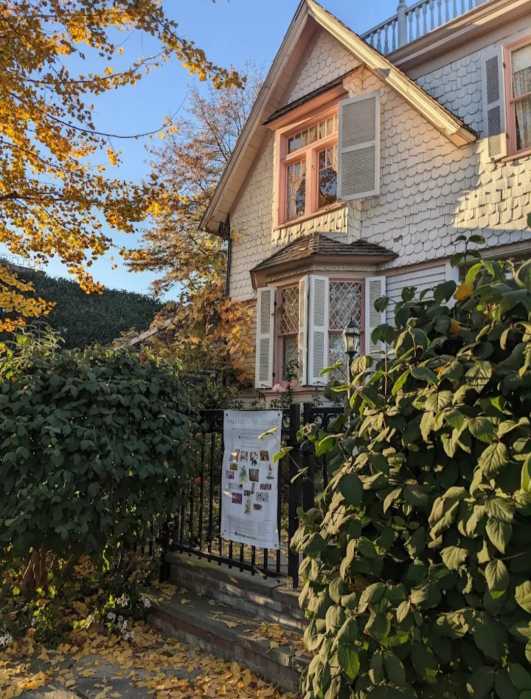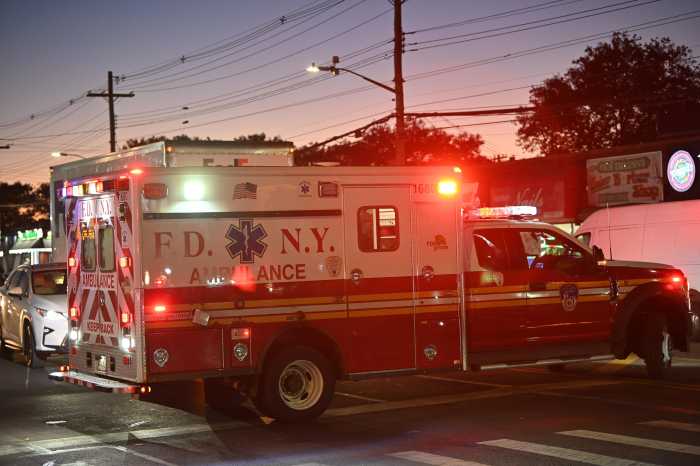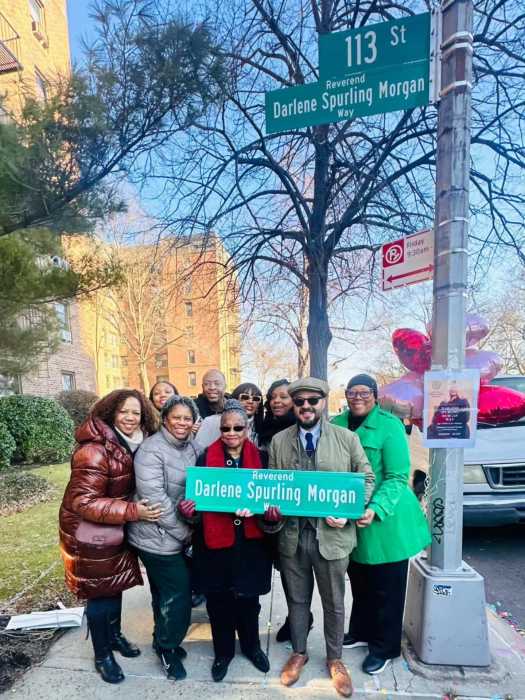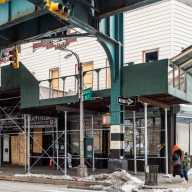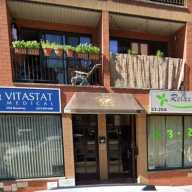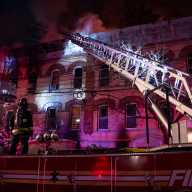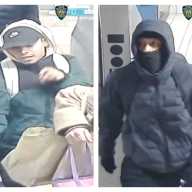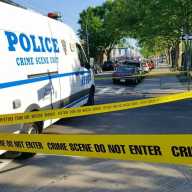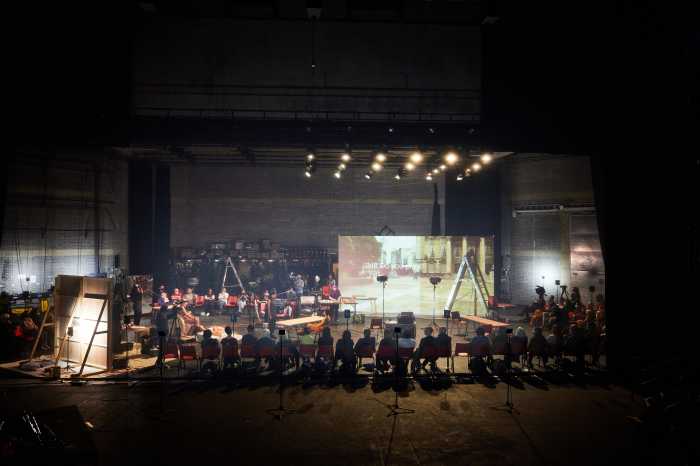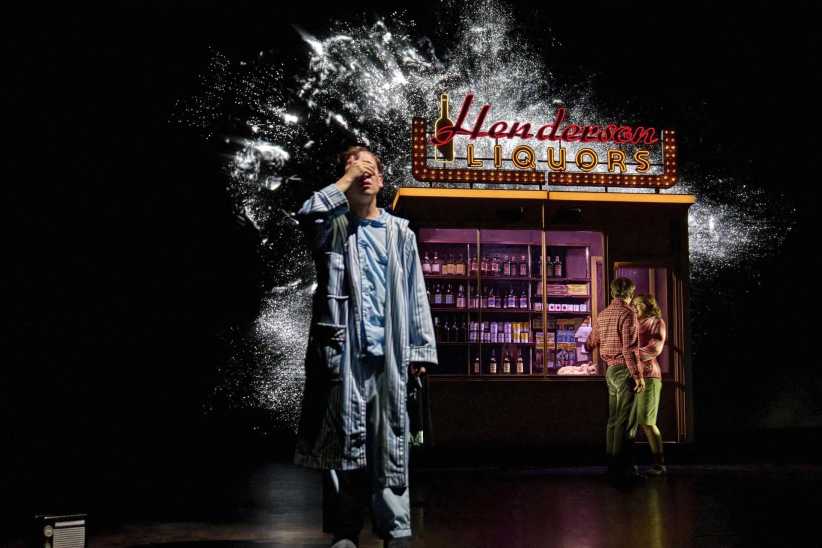The Barber of Corona
When he returned home to Corona from his grueling concert tours, Louis Armstrong would seek the comfort of one of the two chairs in Joes Artistic Barber Shop. And as master barber Joe Gibson would lean over the jovial man he knew as "Satchmo," carefully trimming the trumpet players hair, the weary Armstrong would fall asleep.
Despite his international celebrity, the musician felt at ease napping in the oversized chair. "He knows this is his barber, so why should he worry?" said Gibson, who smiled as he recalled the days when he would make house calls at Armstrongs home around the corner. "He was a very pleasant man. He loved to play with kids."
Over his 40 years as a barber, Gibson has groomed scores of Corona residents and famous black entertainers at his shop, whose memento-covered walls recall the areas heyday and the pride that Gibson takes in his people.
"Ive loved barbering since I was 8 years old," said the 74-year-old master of the flat-top in his light Jamaican accent. "I used to get a whipping because I was trying to shave my friends heads with broken glass."
Gibsons methods have come a long way since then. He has been sharpening his shears and his talents in the same space on 106 St. since 1962, when Corona was a haven for black entertainers like Armstrong and Dizzy Gillespie. Regulars to the shop fondly recall the shops history, which they relate as intimately tangled in the neighborhoods comings and goings.
When word would get out that "Satchmo" was coming home, a crowd of neighborhood children would gather outside his yard. "We used to play in front of his house all the time," said Bruce Randolph, 51, who has been getting his hair cut at Joes since he was 9. "Hed always come out with some cookies or soda."
Armstrongs photographs, which hang all over the walls, show him getting a haircut from Gibson, wiping his face after a shave, and sitting on a stool in front of the shop. The exterior of Joes looked different then; it had large windows with a view to the street.
Today, the shops front is almost entirely bricked up, due to what Gibson called "all the confusion"meaning crime. "It got so bad here in the late sixties and early seventies that I decided to close it in," he said.
Gibson said that things have gotten better. But the neighborhood has changed nonetheless; the home of Armstrong and Dizzy Gillespie is now home to new generations of immigrants from Latin America and Asia. Harry Belafonte and Sidney Poitier, former customers of Gibsons, used to co-own a restaurant called Ribs in the Rough on Northern Blvd., a street that is now filled with signs in Spanish and Chinese.
Gibson doesnt lament the changes; he is semi-retired these days, and nearly all his customers are old-timers. The walls of his shop are like a museum of black history, covered with posters and photos of famous civil rights leaders, entertainers, and political events.
"There was a time when young people coming into the barber shop needed to see black celebrities," he explained, "so they come into the shop and they learn something."
The celebrities on the walls include Martin Luther King, Jr., Nelson Mandela, Bob Marley, Muhammad Ali and Frederick Douglass, in addition to dozens of other entertainers and politicians. There are also posters commemorating the 1963 March on Washington and the Million Man March, as well as so many photos of regular customers that there is hardly any wall space left.
A new face walked into Joes on Friday: Chinatown resident Peter Be, who was in Corona to get some work done on his car stereo. "I was just outside glancing in, and I noticed there was a lot of history in the store," said Be as he waited for his haircut. "I think I learned something new today."

